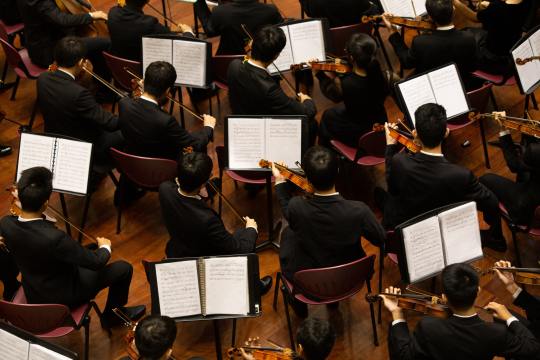#even knowing what the allegories meant it took me years to connect them to reality on a heart level
Explore tagged Tumblr posts
Text
Absolutely agree with you. As a kid, Narnia helped me find actual joy in Biblical truth in a way that Sunday school usually did not.
...And it still hits me pretty hard as an adult too.
Okay but I do get really tired when people rag on Narnia's Biblical parallels for being too overt. Like, yeah dude. It's written for kids. Most kids don't do subtlety. I knew my Bible better than probably 95% of third graders, and yet my parents still had to clue me in. I've talked to people who grew up secular and didn't realize Narnia was Christian until well into adulthood. The Christian parallels in Narnia are at a pretty perfect level for most kids, and the fact that we as adults continue to get new spiritual meaning from it as we grow is a real testament to the depth of Jack's writing.
#jesus was hard to relate to because i'd seen too many boring unrealistic depictions of him#but aslan was lovable and inspiring#of course i knew jesus isn't really a lion but it was a step toward learning that he's not stiff and boring#also i thought heaven would be boring until i read the last battle#even knowing what the allegories meant it took me years to connect them to reality on a heart level#lewis depicts truth in ways that show genuine joy and wonder and i feel like that's lacking in a lot of christian media#lotr was also vital to my spiritual life but later and in a different way#like narnia laid the groundwork as a kid and lotr built on it as an adult#thank god for lewis and tolkien
940 notes
·
View notes
Text
At the Heart of a Calendar Experiment
Love is neither quantifiable nor finite. Time is both quantifiable and finite.
That’s the problem at the center of my current calendar experiment that has me floating between two houses, a polyamorous nomad who splits time somewhat evenly between my wife and my girlfriend for two months.
There are risks in doing this, not the least of which is how it could impact our children. We don’t want my kids to feel abandoned or neglected by their father, nor do we want to leave the impression that we’re blending families at a most awkward time, right as our children are preparing to leave the teenage shipyard and slide down greased rails into the choppy Bay of Adulthood.
At the conclusion of our grand experiment, we’ll all compare notes and evaluate whether or not it was a success.
How will we measure success? By how much we learn. So far, just a week into the evaluation, it’s looking successful from my perspective.
OPENING UP

I’ve come to realize that the risk of silence about my unconventional relationship outweighs the risk of opening up about it. If someone stumbles upon my reality — say, seeing me holding hands with a woman I’m not married to — I lose control of the narrative. I become the victim of assumption at that point, and it’s entirely possible that I won’t even know that people saw me and are now drawing unsavory conclusions about me. The fictional tales they write in their own heads about my sleazy, shameful lying and cheating could become the dominant story when I’d prefer people know the more mundane truth: I’ve consciously picked an unconventional relationship structure in the most ethical way I know how with the full consent, and occasional prodding from, my wife of 20 years.
And let’s be real. By “unconventional,” I mean something that is extremely common but, for reasons that will likely always remain murky to me, is not considered a social norm. The longer I live, the more I realize monogamy is almost nonexistent. It’s a fantasy, yet that fantasy has become the social expectation for generations of Western people who hook up, swing and cheat while hoisting the monogamous banner.
The most honest people among us, of course, realize and admit that fact of humanity. I prefer calling them honest or observational rather than non-judgmental, although both labels frequently overlap. It’s those honest people who I’m very reluctantly opening up to.
CLOSE FRIENDS

“Are you guys free for dinner? I’m here with my longtime girlfriend, and my wife says you should meet her.”
That’s the out-of-the-blue text I sent my friends who I knew were at the same art festival we were mutually visiting. After a long pause — we figured they needed time to shit themselves, then more time to clean up — we made dinner arrangements at the kind of trendy, upscale restaurant that always serves as stark contrast with my middle-age, awkward, plaid-shirt frumpiness.
They thought I was punking them. I was not. And after three hours of lovely conversation over mind-blowing mushroom cakes, sunchoke pâté and gnocchi, we’d deepened our friendship with the closeness that only brutal honesty can bring.
The next night, we repeated the process over a dinner we prepared ourselves: bruschetta, corn salad, grilled scallops and peach melba trifle. Our guest was my girlfriend’s close friend, who opened up about some current relationship struggles she’s dealing with.
It was beautiful. We’re all human, trying to figure this stuff out. Giving and receiving raw truth — not for validation or approval, merely for connection — feels absolutely wonderful.
The food was a hit, too. Our guest described the dessert as an “orgasm in my mouth.”
EMOTIONAL WHIPLASH

One of the hardest parts of dealing with a somewhat long-distance relationship is the emotional explosion that happens when you say goodbye.
I felt that feeling bomb go off when I was leaving home, saying goodbye to my wife and kids for a week away. The fact that I was leaving wasn’t unusual, as I travel all the time for work and fun solo trips, but this time felt different. Driving away, I experienced a sad longing sensation, the kind of nostalgic melancholy that I only noticed in Brahms’ symphonies after I had some age under my belt.
Before the return trip home, it felt even more intense. It was Stravinsky sadness this time, shocking and maddening. I ugly-cried all alone after saying goodbye to my girlfriend after a blissful week, not because things ahead were so bad, but because things behind were so good.
The emotional high of opening up to a few close friends surely contributed to that, but it’s not the only reason. This roller coaster of intense highs and lows has been a continuous thread in the years since opening our marriage. It comes with the territory, I suppose, of having to say goodbye and hello so frequently when you deeply love more than one person.
Part of my sadness, though, came from a realization: I can’t have what I really want.
My fantasy life involves peace and stability. I dream of a quiet, tiny, neatly kept cottage where I socialize at the Quaint Orchid Growers Society and cook meals from the heirloom vegetables I grew from seed in my garden. My nights are filled with smoky Scotch, burning incense, silky jazz and long, thoughtful, introspective conversations with my brilliant, beautiful, monogamous wife who can’t wait to unleash her sensual side when the curtains close.
That’s the dream.
It’s not possible for that dream to become my reality, though, and not just because it’s ridiculous.
For one thing, I couldn’t ask my wife or my girlfriend to give up their other partners, any more than they could ask me to do the same thing. It’s impossible, at least, if you really love someone. Secondly, even if I had my minimalist/monogamist dream life, I would miss the freedom and excitement that polyamory provides. I’d agonize over the love I’m potentially missing out on, knowing what I know now about how great it can turn out. Even though I’m not looking for someone new to date now — the calendar forbids it, and the monogamist clinging inside me doesn’t really want it — the ever-present possibility of serendipity isn’t something I’ll easily give up.
My emotional side craves something that my cognitive side knows is impossible, but the craving for that fantasy is still very real.
CHANGE, LIKE NATURE

The stability within my fantasy is especially appealing during a stage of life, and a current experiment, where I have to check my smartphone to see where I’ll be laying my head every night.
I’m a creature of routine. I want my Quaint Orchid Growers Society meetings every Wednesday at noon, my Scotch-sipping friends every Friday night at 7, and my head in the same bed, with the same person, every night. We’ll sip chamomile tea by the fire at sunset and share coffee by the garden window at sunrise.
Again, that’s the fantasy, whether it’s my own brain wiring or my conservative religious upbringing at fault for it.
That fantasy is a black-and-white snapshot; my current life is a color IMAX movie. It’s ever-changing, larger and much more vibrant than the small, still life in my dreams.
If there’s a solution to be had, I suspect it will involve learning to appreciate the changes in my life for their own unique beauty. I’ve already got a good allegory for it: Alaskan wilderness.
On our trip to the far north a few weeks ago, one of many things I marveled at was how different all the scenery can look day to day, moment to moment. The light changes. The weather changes. The tide rolls in and out. The wildlife comes and goes.
If I took 10,000 snapshots from the cabin porch, every one of them would be different. There’s a beauty in that, of the constant change, and it’s telling that nothing in nature stands still. The universe itself is growing, pulsing, creating, destroying. We’re part of that.
When relationships change in their infinite ways — growing, pulsing, creating, destroying — it’s not something to be afraid of, which is a default reaction for many of us.
Instead, change is the most natural thing we can do as humans, mirroring the very nature we see all around us. We’re not meant to be static beings. We’re meant to change, just like everything else in existence.
2 notes
·
View notes
Text
“The Power of Nonviolence” based on Isaiah 5:1-7 and Matthew 21:33-40
As my paternal grandmother (Nana) aged, she needed increasing levels of help. After she'd transitioned to assisted living, her beloved only son (my father) would often take her out on shopping excursions. My Nana was a woman who loved to shop, ok, she was a woman who lived to shop. It regularly amused me to talk to both my father and my Nana after said excursions. My Nana would relate the experiences this way, “Your father is SO impatient! All I wanted to do was go to a few stores, look at what they had, and enjoy being out. All he wanted was to get out of there. It is like he doesn't know how to have any fun!” My father would relate the experiences this way, “Your grandmother takes forever! I took her to the store, she wanted me to push her down each of the the aisles, slowly, and then when we were done she'd want to do it again!”
Their two versions of shopping together always made me giggle because it was so clear that they were relating the same story, just from two different experiences. I've been thinking about their shopping excursions this week because the Gospel does the opposite.
As far as I can figure it out, what we have in the Gospel is one story being used for two totally different purposes at the same time (without changing perspectives). One of these stories is the narrative that Jesus told and the other is the one that the early Christian community told, and they told them for VERY different reasons.
Since we are are much more familiar with the one the early Christian community told, and since it is the version we see in the Gospel today, we're going to start by looking at that one. It is brilliantly done, poetically beautiful, and intended to insult the Jews. SIGH. As the Jesus Seminar puts it, “This parable was a favorite in early Christian circles because it could easily be allegorized [to the story where] God's favor was transferred from its original recipients (Israel) to its new heirs (Christians, principally gentiles).”1 This version intentionally reflections on Isaiah 5:1-7. They start in parallel ways, with the description of the creation of the vineyard: planting, enclosing, digging, building a watch tower. The parallels in the beginning of the passages are intended to remind us of the conclusion of the Isaiah reading, which says (in case you forgot), “[God] expected justice, but saw bloodshed; righteousness, but heard a cry!” (Isaiah 5:7b, NRSV)
In Isaiah the shock is that after all that work (and it takes years to get grapes from the vineyard), the grapes were sour. The metaphor indicates that God had invested in creating a just society with Israel and is horrified that they didn't become one. Matthew extends this metaphor, indicating that he thinks the Jews failed to create a just society, but that the Christians will succeed. In the allegorical reading of the parable, God will kick out the tenants and replace them. It seems that this reflects a time when Christians were feeling disempowered and felt the need to tell stories that empowered them. The problem is that for a whole lot of centuries now, Christians have been the empowered and by continuing to tell themselves this story they have disempowered Jewish people and perpetuated antisemitism.
We can be clear that the Matthew version is the creation of the Christian community and not Jesus because it includes the detail about the son being killed and cast off. Ched Myers writes, “The son is killed and cast off (without proper burial, the ultimate insult) Jesus too will be cast 'outside' the city of Jerusalem.”2
The good news is that scholars think they can get a good guess at how the original parable sounded, the one Jesus told. This is the other version of the parable, and it wasn't allegorical. William Herzog points out the version in Matthew is quite different from others, saying, “The parable begins with a description of a man creating a vineyard yet neither Luke nor the Gospel of Thomas include these details.”3 That means that the original parable wasn't meant to be an extension of Isaiah 5, and likely wasn't intending to dismiss the Jews. The Gospel of Thomas version is thought to be the closest to what Jesus might actually have said:
“He said, A [. . .] person owned a vineyard and rented it to some farmers, so they could work it and he could collect its crop from them. He sent his slave so the farmers would give him the vineyard's crop. They grabbed him, beat him, and almost killed him, and the slave returned and told his master. His master said, "Perhaps he didn't know them." He sent another slave, and the farmers beat that one as well. Then the master sent his son and said, "Perhaps they'll show my son some respect." Because the farmers knew that he was the heir to the vineyard, they grabbed him and killed him.”4
This parable seems to describe something that might have actually happened during Jesus life time. It reflects tensions that were present in Galilee at that time. In the Social Science Commentary they write, “If we may assume that at the earliest stage of the Gospel tradition the story was not an allegory about God's dealings with Israel, as it is now, it may well have been a warning to absentee landowners expropriating and exporting the produce of the land.”5 Another commentator concludes, “And however the vengeance of the owner may be interpreted allegorically, it certainly reflects a landowner's wrath, which which the landless Palestinian was all too familiar.”6
So the problem in the parable according to Herzog is “the creation of a vineyard would, on economic grounds alone, have disturbed the hearers of the parable. Because land in Galilee was largely accounted for and intensively cultivated, 'a man' could acquire the land required to build a vineyard only by taking it from someone else. The most likely way he would have added the land to his holdings was through foreclosure on loans to free peasant farmers who were unable to pay off the loans because of poor harvests.”7 This means that “building vineyards was a 'speculative investment' and therefore the prerogative of the rich.”8 So the parable reflects economic realities that were doing GREAT harm in Galilee at the time of Jesus.
It also reflected a reality of violence at the time of Jesus. Herzog continues, “If the peasants resorted to violence only when their subsistence itself was threatened then the conversion of land from farmland to a vineyard ([Mark] 12:1b, 2) would be an event that would trigger such a response. The building of the vineyard and the violence it generates also describes the conflict of two value systems. Elites continually sought to expand their holdings and add to their wealth at the expense of the peasants.”9 So, the creation of new vineyards was part of a system of wealth transformation from the subsistence peasants to the very wealthy. Herzog then seems this as step one in a spiral of violence that went like this:
“The spiral begins in the everyday oppression and exploitation of the poor by the ruling class.This violence is often covert and sanctioned by law, such as the hostile takeover of peasant land. More often than not, peasants simply adjust and adapt to these incursions by the elites in order to maintain their subsistence standard; but... even peasants have a breaking point. When their very subsistence is threatened, they will revolt. This is the second phrase of the spiral of violence, and it is this phase that the parable depicts in great detail. Inevitably, such rebellions or revolts are repressed through the use of force, as the final question of the parable suggests. This officially sanctioned violence defines the final phase of the spiral of violence, which always occurs 'under the pretext of safeguarding public order [or] national security.”10
I have, to this point, been following the commentaries of multiple brilliant scholars: ones who differentiated the current form of the parable from the one Jesus likely told, ones that explain the economic factors of vineyards, ones that connect economic systems with violence. However, first I'm going to draw my own conclusion, one that none of them came around to.
To get there, I want to go back to a seemingly simple point John Dominic Crossan made while he was here. He mentioned that Jesus was killed for being a non-violent revolutionary, and we know this because he was killed alone instead of being killed with all of his followers like he would have been if he'd led a violent revolt. John Dominic Crossan is one of many scholars who think that Jesus was very intentionally nonviolent, and that was a definitional characteristic of his movement. I agree with them.
My suspicion is that if Jesus told this story, he told it to talk about violent resistance and nonviolent resistance. He would have told this story to point out that violence tends to beget violence, and to offer an alternative. The spiral of violence: taking away people's livelihoods, killing in self-defense, repressed rebellions was NOT the vision Jesus had for the people. By naming how things tend to go down in the world, by talking about how others were choosing to act, he would have been differentiating his movement from theirs.
The answer to Matthew's question at the end of the parable, “Now when the owner of the vineyard comes, what will he do to those tenants?” is that the owner would either kill them directly or displace them without any resources to allow them to die slowly. In the allegorical version of the story when God becomes the landowner, that's disgusting. However, if Jesus' intention was to point out how the world works and offer an alternative, it is worth listening to.
This week, it seems worth remembering that we are followers of a man who lived in a time of violence, who choose nonviolence and invited others to choose nonviolence with him. John Dominic Crossan invited us to remember that there is power in nonviolence too, and that is a power of the followers of Christ. The empire that perpetuated violence in the of Jesus killed only him because they thought the threat of violence would kill his movement, but it failed. Nonviolent resistance could not be stopped so easily.
The question for today is how we practice nonviolent resistance in the ways that Jesus did: which were pointed, powerful, and effective in caring for the vulnerable people of God. This week has felt overwhelming: paying attention to yet another mass murder, learning more and more about the ways that the people of Puerto Rico have been systematically impoverished, and watching as another large swath of people prepare for yet another hurricane. Nonviolent resistance takes intentionality, focus, communication, collaboration, creativity, and commitment. But it has brought justice to this world time and time again. (If you need an example, the Civil Rights Movement in this country is the most accessible, but the list is really quite long). The next successful movements for justice will be wise to follow the same method that Jesus used: nonviolent resistance. For that I hope we can all say: Thanks be to God. Amen
1 Robert W. Funk, Roy W Hoover, and The Jesus Seminar, The Five Gospels: The Search for the Authentic Words of Jesus (HarperOneUSA, 1993), pages 510.
2 Ched Myers, Binding the Strong Man ( Maryknoll, NY: Orbis Books, 1988, 2008), page 309.
3 William R. Herzog II, Parables as Subversive Speech, (Louisville, KY: Westminster/John Knox Press, 1994), p. 101.
4Gospel of Thomas 65:1-7, Scholars Version.
5 Bruce J. Malina and Richard L. Rohrbaugh, Social Science Commentary on the Synoptic Gospels (Minneapolis: Fortress Press, 2003), p. 110.
6 Myers, 309.
7 Herzog, 102.
8 Herzog, 103.
9 Herzog, 107-108.
10 Herzog, 108-109, working with work from Helder Camara, 1971.
Rev. Sara E. Baron
First United Methodist Church of Schenectady
603 State St. Schenectady, NY 12305
Pronouns: she/her/hers
http://fumcschenectady.org/
https://www.facebook.com/FUMCSchenectady
October 8, 2018
#Thinking Church#progressive christianity#FUMC Schenectady#UMC#Schenectady#Albany District#Rev Sara E. Baron#parables of Jesus#Thanks commentators#Thanks Jesus Seminar#John Dominic Crossan#Nonviolence#Nonviolent resistance#Resist
0 notes